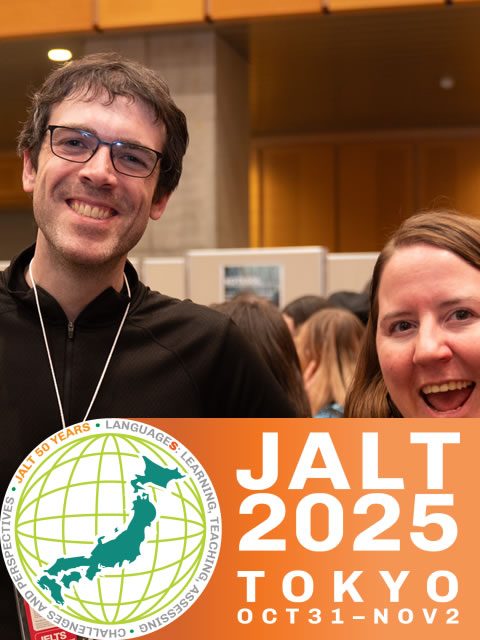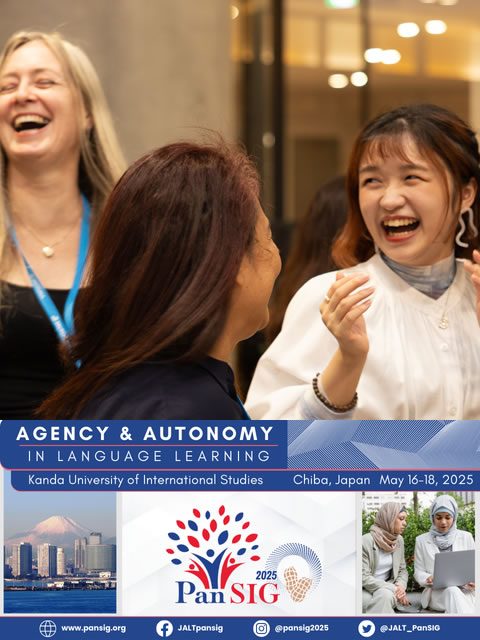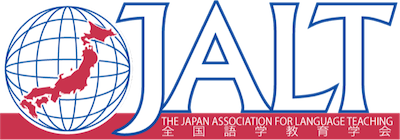Your cart is currently empty!
Plenary Speakers
•
Diane Larsen-Freeman
Momoko Nakamura
Lindsay Clandfield
Judith B. O’Loughlin
Diane Larsen-Freeman
Sponsored by JALT
Plenary Session: Including all Students: A Complex Systems Perspective
Saturday Nov. 24, 9:45 AM – 10:45 AM, Chu Hall (1F)
The world seems to be an increasingly diverse place. Whether this is true or whether it is just that we are more aware of the diversity that has always existed is an open question. However, what is not at issue is the fact that we have responsibility as teachers for the education of all our students. There are already many demands on our time, so how are we to cope with the varied needs of our students in order to include them?
I will use the frame of Complex Dynamic Systems Theory (CDST) to suggest several ways that their inclusion can be addressed, if not accomplished. First, we need to cultivate a systems perspective. It is not enough for teachers to face the challenge on their own. Second, we need to recognize the reciprocity that exists between teachers and students. We are, after all, partners in the teaching-learning process. Third, we need to think in terms of universal design principles. Among these, I include CDST-informed principles of iteration and adaptation. Fourth, we need to appreciate the rewards that can be gained if we practice inclusion; it is not simply about doing good deeds. Finally, it is often the fear of diversity that fuels many of the conflicts in our world today. This realization invites us to reflect on what our role can be to defuse some of the tensions that lead to the conflicts in the first place.
Additional Session: Contrasts and Complementarities in SLD and Teaching
Sunday Nov. 25, 5:10 PM – 6:10 PM, Room 901
When a new way of thinking comes along, it is often easier to understand it by contrasting it with what it is not. In this talk, I will take my theoretical commitment to Complex Dynamic Systems Theory (CDST) and explore its implications for second language development (SLD) and teaching by contrasting what is “given” today with what CDST newly inspires. I will explore concepts such as dynamism/stasis, innovation/imitation, iteration/repetition, adaptation/replication, affordance/input, and transformation/transfer. I will also discuss the complementarities of patterns and rules, novelties and errors, options and conventions, non-linearity and linearity, implicit and explicit, and variability and stability. I will illustrate these 12 contrasts and complementarities with data from second language development and teaching.
Diane Larsen-Freeman is Professor Emerita and former Director of the English Language Institute at the University of Michigan. She is also a Professor Emerita at the Graduate SIT Institute in Vermont and a Visiting Senior Fellow at the University of Pennsylvania. Her most recent books are Complex Systems and Applied Linguistics (2008, with L. Cameron), the third edition of Techniques and Principles (2011, with M. Anderson), and the third edition of The Grammar Book. Form, Meaning, and Use for English Language Teachers (2015, with M. Celce-Murcia).
Momoko Nakamura(中村桃子)
Sponsored by JALT
Plenary Session: Gender Construction in Japanese Translation
Sunday Nov. 25, 3:25 PM – 4:25 PM, Kaigi Hall (11F)
This paper explores the inter-lingual process of gender construction by analyzing the employment of gendered styles in Japanese translation. In globalization, more studies are required to examine intersections of gender beyond language boundaries (Bloomaert 2010; Bucholtz & Hall 2004; Cameron 2000). Drawing on a set of linguistic features associated with femininity and masculinity in Japanese, I investigate how Japanese translators use the gendered features in translating the speech of non-Japanese women and men (Inoue 2003; Shibamoto Smith 2004). The data consists of the translated speech in English and Russian literary works, TV dramas, films and newspaper interview articles. Based on the methodology of discourse analysis, I examine the occurrences of feminine and masculine features in the wide range of media discourse (Nakamura 2013). The analysis shows: 1) Japanese translators overwhelmingly use feminine features in translating non-Japanese women’s speech, and 2) while they also employ masculine features in translating non-Japanese men’s speech, with respect to the casual, laid-back speech of non-Japanese men, they have created a specific Japanese style used only in the translation of the speech. The findings suggest: 1) the predominant use of feminine features for the speech of non-Japanese women works to naturalize Japanese femininity beyond linguistic and ethnic boundaries, and 2) the invention of the style for non-Japanese men serves to enregister the Japanese stereotype of non-Japanese casual masculinity, depending on which Japanese masculinity maintains its idealized status. In sum, this paper contributes to elucidating the inter-lingual intersections of gender construction.
Additional Session: Normalization and Simplification of Japanese Youth Style
Saturday Nov 24, 11 AM – 12 PM, Room 910
This paper examines how a newly emerging youth speech style is normalized and simplified in media discourse (Buchotlz 2009; Kiesling 2004). Sociolinguistic styles not only indexically derive a variety of stances in interactions, but also can be bound to particular social groups (Agha 2007; Coupland 2007; Eckert 2008). This paper contributes to the growing interests in the relationship between stance, style, and identity by examining the Japanese youth style characterized by su, the shortened form of a polite copular desu, both in local interaction and in media. The data consists of thirty-minute video-recorded conversations of male college students, responses to a posting about su at an online blog of a nation-wide newspaper, and three TV commercials. The analyses of three sets of data show that: 1) the major function of su in conversation is to index the stance of polite solidarity (Hasegawa 2006), 2) 92% of 336 responses denies the politeness of su, claiming that su does not constitute the “correct” Japanese and that it is found only in the speech of “uneducated” men, and 3) the characters who speak with su in TV commercials are male athletes or impolite men who ignore traditional hierarchy. The findings suggest that the polite but intimate stance of su in local interactions is normalized by the blog respondents according to their norms of correct Japanese and, both respondents and media creators simplify the indexicality of su by associating it with specific groups of men.
Momoko Nakamura (中村桃子) is Professor of English at Kanto Gakuin University. Her recent publications include Gender, Language and Ideology: A Genealogy of Japanese Women’s Language (John Benjamins), Honyaku ga tsukuru Nihongo [Translation and Japanese Language] (Hakutakusha), Onna kotoba to Nihongo [Women’s Language and Japanese Language] (Iwanami shinsho), Sei to Nihongo [Sex and Japanese Language] (NHK Books), and Onna kotoba wa tsukurareru [Constructing Women’s Language] (Hituji shobo, Received the 27th Yamakawa Kikue Award).
Lindsay Clandfield
Sponsored by Atama-ii Books
Plenary Session: Diversity, Inclusion and Authenticity in ELT Materials
Saturday Nov, 24, 2:30 PM – 3:30 PM, Chu Hall (1F)
When we talk about what else we teach apart from vocabulary and grammar, the topic of “the real world” comes up with great frequency. Variously, we mean real-world English (i.e. unscripted, accented), real-world people (diverse characters, language models), real-world tasks (practical, engaging, useful) or real-world contexts (topical, inclusive, believable). In practice, however, reflecting the real world in ELT materials is more problematic than it may appear–and it may not even be entirely desirable. After all, whose reality are we modeling, and for whom? What are our editorial constraints? How authentic can something remain when it’s placed into a classroom? And why is it that sometimes the most artificial situations, language, and tasks can provide the most enjoyment and potential learning? In this plenary, we will examine some the issues and problems with our obsession with authenticity, especially as it relates to our teaching materials and attempts to reflect the real world in our classrooms.
Additional Session: New Directions in Materials Design for Teachers
Sunday November 25, 1:05 PM – 2:05 PM, Room 910
For many years, the kind of materials teachers made and shared was the ubiquitous worksheet. However, in teachers’ rooms around the world, and in online teacher groups, people are increasingly more likely to be sharing their latest powerpoint slideshow, or an interactive quiz. This engaging and very practical workshop will address different aspects of task design and materials creation for language teachers. Using very simple and free tools, we will explore new types of activities both in class and online. In particular we will explore creating effective slideshows to enhance speaking activities. A common theme across the workshop will be that, although we have access to new digital tools, much older principles for communicative tasks still apply.
Lindsay Clandfield is an award-winning writer, teacher, teacher trainer and international speaker in the field of ELT. He has written more than ten coursebooks for language learners and is the co-author of various methodology books for teachers, including the new book Interaction Online published by Cambridge University Press. He is also responsible for various self-publishing projects, notably the round (www.the-round.com) and Extreme Language Teaching (www.exlt.wordpress.com).
Judith B. O’Loughlin
Sponsored by JALT, Soka University, and the JALT Teaching Younger Learners SIG
Plenary Session: Three Strategies for Fostering Learner Resilience
Sunday Nov. 25, 10:25 AM – 11:25 AM, Kaigi Hall (11F)
For young learners, whether traditional newcomers or students with limited literacy, to become resilient, schools must create “havens of resilience” (Henderson, 2013) helping learners discover their own internal strengths, the “I Have, I Am, I Can” (Grotberg, 1995; Davis, 2014). Learners discover how to draw on three strategies to develop their internal strengths and external resources to succeed emotionally and academically in the English language classroom and beyond. Resilience isn’t a specific program or curriculum, but a process. Helping students develop resilience is about how teachers communicate and connect with learners, rather than what they teach (Truebridge, 2009). The presenter describes the model, connecting to the conference theme of addressing diverse student populations and helping to create an inclusive learner-environment. She provides numerous examples of “I Have, I Am, I Can.” A personal connection between teachers and English language learners is vital to the development of resilience for newcomers and at-risk students with interrupted formal education (SIFE) (Rana, Qin, Bates, Luster, & Saltareli, 2011). Developing positive interactions between teachers, students, and families, showing that one cares, aids English language learners. Psychologist Edith Grotberg, in her research, believes that all learners need a reminder of the strengths they possess. In the “I Have, I Am, I Can” model, learners are able to develop and recognize the unique strengths they possess. Component examples include:
I Have –strong relationships, role models, external supports
I Am – inner strengths, positive characteristics.
I Can – solve problems, know how to/where to seek help, develop skills
Additional Session: Picture Book Visuals and Text Enhance Comprehension
Saturday November 24, 4:40 PM – 5:40 PM, Room 910
Picture books have traditionally been part of early elementary instruction, while middle and secondary classroom teachers have shied away from their use. More recently, however, picture books have been noted as supporting academic language instruction in upper elementary middle schools, including in the English classroom, as noted by Costello & Kolodziej, 2006, and Murphy, 2009, (Middle School Journal). Participants learn how to choose well-crafted, content-accurate picture books that enhance classroom curriculum, for the introduction to content topics, academic vocabulary, and as an introduction to concept understanding. The presenter describes the critical elements to look for in picture books. She provides participants with a checklist/evaluation tool to help choose the best books for instruction and models how to choose accurate and appropriate books for English learners. The presenter models suggested steps in picture/text interactions with English learners and how to use the dual-coding of information to build vocabulary and support the comprehension of the content through five literacy strategies: text connections, visualizing, questioning, determining the main idea, and determining inference from picture book illustrations. Participants practice how lessons are developed for picture/text interaction and dual coding. In groups, they practice and model for others the “dual coding” of information with a picture book from the sample books shared in the session. At the conclusion of the session, participants are able to take away the tools needed to help choose accurate and appropriate picture books for their students.
Judith B. O’Loughlin has taught in K-12, adult education, and graduate university TESOL endorsement programs. She consulted and taught for U.S. federal and state grants to train ESL and Special Education teachers. As a consultant, her focus is on standards-based differentiated curriculum, collaborative teaching, and newcomers with interrupted education. She is the author of the Academic Language Accelerator (Oxford) and co-author of Students with Interrupted Formal Education: Where They Are and What They Need (Corwin).
Link to downloadable materials for Judith B. O’Loughlin

JALT2025 International Conference
2025年10月31日(金)〜2025年11月02日(日) 東京都渋谷 国立オリンピック記念青少年総合センター Friday, October 31 – Sunday, November 02, 2025 • National Olympics Youth Memorial Center, Tokyo, Japan

PanSIG Conference
PanSIG 2025 will be held May 16-18 in Chiba. PanSIG is an annual conference organized by JALT’s Special Interest Groups (SIGs).
